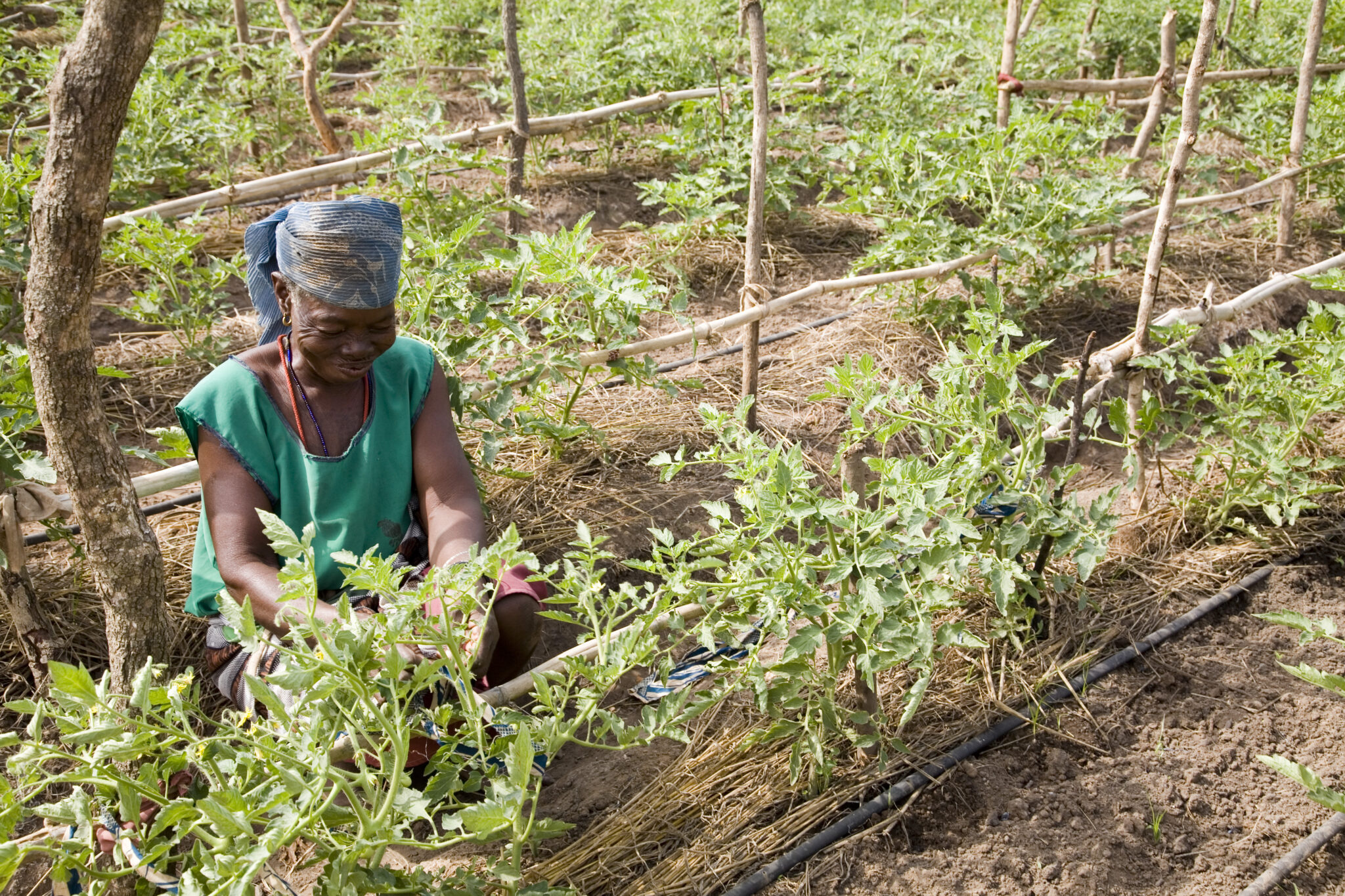
Solar-powered drip irrigation is a sustainable and practical way to grow a variety of produce. Used in isolation, solar power mitigates carbon emissions and drip irrigation reduces water use. Used together, these technologies offer a climate-smart option for crop production in even the harshest and driest environments.
Benefits of Drip Irrigation
Drip irrigation offers a variety of benefits, for both the environment and for farmers. These include:
- Reduced water use: By delivering precise amounts of water exactly where it’s needed—directly to the roots of crops—drip irrigation requires significantly less water than other irrigation methods such as sprinkler systems. This can also result in less weeds, as spaces between crops stay dry.
- Time savings: For farmers watering by hand, switching to drip irrigation can save substantial amounts of time and human labor by automating the irrigation process. These time savings can translate to increased crop production, with farmers no longer limited by the hours spent tending to each plant.
- Versatility: Drip irrigation systems can irrigate small and large gardens alike, across a variety of terrains. When plots are on a slant, drip irrigation keeps the water where it’s needed and avoids runoff that can occur with other irrigation methods.
- Plant health: Damp environments created by traditional irrigation methods can lead to disease and mildew. Drip irrigation minimizes water contact with the above-ground portion of the plant, resulting in better plant health.
The benefits of drip irrigation are vast, but to achieve them, these systems need a power source. That’s where solar energy comes in.
Combining Solar Power and Drip Irrigation
Solar energy is a practical solution for drip systems, offering a clean, reliable source of power that can function in nearly any location.
The exact setup varies, but the systems can be relatively simple. A photovoltaic array is constructed to pump water from an underground source, such as an aquifer, into an elevated reservoir. Water is then fed by gravity through a low-pressure drip irrigation system directly to each plant in a garden. These systems can self-regulate for variable conditions: Solar radiation is the main driver for both evapotranspiration and solar pump speed, so on days where plants need extra water, the pump works faster to deliver it. Once installed, these systems are durable and long lasting. They can be—and often are—designed to operate without a battery, making maintenance minimal.
Case Study: The Solar Market Garden
Solar-powered drip irrigation systems can be particularly helpful—even lifesaving—for rural communities without access to an electric grid. To see this technology in action, we can look to the Kalalé District of Benin, West Africa.
Located in the arid northeast of the country, the Kalalé District sees rainfall in the months of May-October, allowing for natural crop irrigation. But in the 6-month dry season that follows, fields often go barren with no water to keep crops alive, and a lack of electrical infrastructure to send water where it’s needed. This results in hunger and malnutrition.
In 2007, the Kalalé District was introduced to its first solar-powered drip irrigation system, which became known as the Solar Market Garden (SMG). The SMG model leverages solar-powered drip irrigation to water gardens maintained by local women’s farming collectives. This allows the women to farm larger plots with less labor. As a result, they can not only feed their families year-round, but they can also sell surplus crops to earn income. That income can then be used to pay for healthcare, send their children to school, or reinvest in the local economy. Since the initial three gardens were installed, the program has expanded to eight more gardens in the Kalalé District.
This case study shows the unique benefits of solar-powered drip irrigation. Even in harsh and arid environments, this technology has proven its worth as a sustainable tool for community health and wellbeing. Click here to learn more about the Solar Market Gardens, developed by the Solar Electric Light Fund (SELF). And click here to help us continue this work.

SELF is a global leader in the fight against energy poverty. Since 1990, we’ve pioneered unique applications for solar energy, powering progress on food security, health care, education, gender equity, and more.
501(c)(3) non-profit organization
EIN: 52-1701564